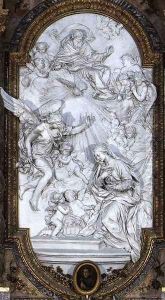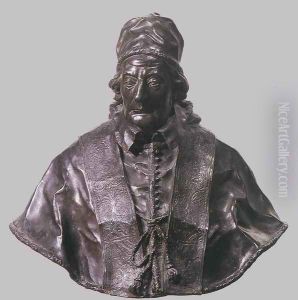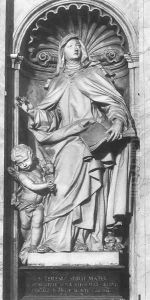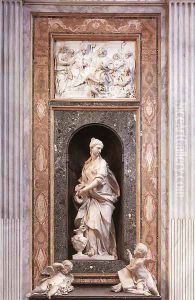Filippo della Valle Paintings
Filippo della Valle was an Italian sculptor, born in Florence in 1698. Della Valle emerged as a prominent figure in the Rococo art movement, which was known for its elaborate ornamentation, intricate details, and elegant lines. His contributions to the world of sculpture helped to define the aesthetic preferences of the 18th century, particularly within the context of Italian art. He was a pivotal figure in transitioning the grandeur of Baroque sculpture into the more delicate and refined Rococo style.
Della Valle received his initial training in Florence, under the guidance of notable artists of the time. His talent quickly became apparent, and he was soon sent to Rome to further his studies. In Rome, Della Valle was deeply influenced by the works of ancient sculptors as well as by his contemporaries. It was in Rome that he refined his style, combining classical elements with the emerging trends of the Rococo. Della Valle's sculptures are characterized by their dynamic forms, graceful figures, and expressive faces, capturing the idealized beauty and emotional depth that were highly valued during his era.
Throughout his career, Della Valle received numerous commissions from the church as well as from private patrons, including members of the aristocracy. His works include religious figures, mythological scenes, and portraits, all of which showcase his ability to imbue marble and bronze with a sense of softness and life. One of his most famous works is the monument to Pope Benedict XIII, located in the Basilica of Santa Maria sopra Minerva in Rome, which exemplifies his mastery of both form and expression.
Della Valle's influence extended beyond his lifetime, as he played a crucial role in the development of sculpture in Italy and across Europe. His approach to sculpting, which emphasized grace, elegance, and emotion, paved the way for future generations of artists. Despite his death in 1768, Filippo della Valle's legacy endures, with his works continuing to be admired for their beauty and technical prowess. His contributions to the Rococo movement have secured his place as one of the key figures in the history of Italian sculpture.



